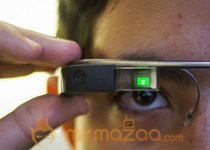Here we are in the summer of 2015 and hardly a peep about a device that the media and public obsessed about for two years. So, what happened to Google Glass and where's it going?
The current Glass page answers the first question with, “Thanks for exploring with us.” An exploration that did not end well. Think of Glass this way: suppose Apple released a very expensive ($1,500), buggy beta version of the Watch to thousands of customers. Then many high-profile customers devoted a lot of ink to how buggy and incomplete it was. Then, suppose, Apple suddenly decided to cancel the watch.
That would be seen as an epic failure. Except what happened to Glass -- a head-mounted wearable computer -- was worse than that (before Google finally pulled the plug in January this year). Google also had to deal with a firestorm of objections about privacy rights, such as surreptitious recording of private conversations. And some establishments began to ban Glass. Then the media began to play with the term “glasshole”, finally mainstreaming it.
Then there were safety concerns, such as driving with Glass, not to mention health concerns: do you want a Wi-Fi signal inches away from your head for hours at a time?
There were other problems too: As pointed out in many write-ups about why Glass failed. There was too much hoopla –hyperbolic write-ups in magazines, sky divers, fashion shows, Glass-wearing royalty (Prince Charles sported the technology) – but little actual progress in bringing the product out of beta.
Finally in 2015 (Glass was released in 2013) we had a Google executive taking a stab at explaining the failure. At a South by Southwest conference keynote in March, Google’s Astro Teller pointed out in his keynote that by encouraging public attention, Google ultimately encouraged too much negative scrutiny. Not to mention confusion about what the product actually was: an experiment or a finished product? (There was apparently more confusion about whether Glass was a final product than savvy beta-testing Glass devotees may realize.)
So, what’s Google doing with Glass now? “The Glass team is heads down working on the future of the product,” a Google spokesperson told FoxNews.com in an email.
Though Google stopped selling Glass and ended the Explorer beta program in January, it hasn’t canceled the project (though the first iteration of the Glass product was canceled). Tony Fadell, who heads Google’s Nest connected home division (and had a big hand in developing Apple's iPod), now runs the new Glass effort. The New York Times said earlier this year that Fadell was going to “redesign the product from scratch” and not release it until it is finished. No public experimentation (humiliation) this time.
Which brings us back to the current Google Glass page. “The journey doesn’t end here,” it says in big, bold typeface. It's understandable that Google wants to take another crack at Glass. A fresh forecast this month from market researcher IDC puts global wearable shipments at 72.1 million in 2015, up a whopping 173.3 percent from the 26.4 million units shipped in 2014. And Google's nemesis, Apple, seems to be having some success with its first wearable, the Apple Watch, while Google-inspired Android Wear watches are not faring as well.
Google must now prove that the first, disastrous leg of the Glass journey is behind it.







